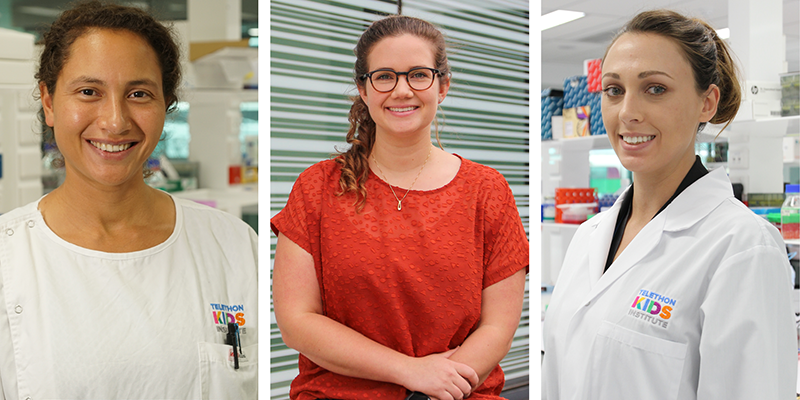Search

News & Events
Pneumococcal vaccine sees hospital admissions for deadly pneumonia slashed by halfThousands of children born in Papua New Guinea (PNG) no longer face a future cut short by severe pneumonia, thanks to the introduction of pneumococcal vaccination as part of the country’s National Immunisation Program.

News & Events
Bacterial slime causing persistent wet coughs for childrenResearchers using powerful microscopes have identified bacterial slime in the lungs of some children with persistent wet coughs.

News & Events
Raine Foundation grants to support key child health researchThree outstanding young researchers from The Kids Research Institute Australia have been named Raine Fellows and received valuable Raine Priming Grants to support their child health research.
Research
Febrile seizures following measles and varicella vaccines in young children in AustraliaFebrile seizures (FS) are common in childhood with incidence peaking in the second year of life when measles and varicella-containing vaccines are administered.
Research
Impact of an Ivermectin Mass Drug Administration on Scabies Prevalence in a Remote Australian Aboriginal Community.Scabies is endemic in many Aboriginal and Torres Strait Islander communities, with 69% of infants infected in the first year of life.
Research
Characterization of G2P[4] rotavirus strains causing outbreaks of gastroenteritis in the Northern Territory, Australia, in 1999, 2004 and 2009Outbreaks of rotavirus diarrhea cause a large disease burden in the Alice Springs region of the Northern Territory, Australia.
Research
Risk factors and comorbidities for invasive pneumococcal disease in Western Australian Aboriginal and non-Aboriginal peopleAustralian Aboriginal people have among the highest rates of invasive pneumococcal disease (IPD) worldwide. This paper investigates clinical diagnosis, risk...
Research
Predictors of Disease Severity in Children Hospitalized for Pertussis during an EpidemicThis study aimed to determine factors associated with severe pertussis in hospitalized children during an epidemic using a novel pertussis severity scoring...
Research
Assessing the effect of meningitis prevention and treatment.In high-income countries serious bacterial infections such as meningitis are uncommon, but their severity has led to prompt adoption of vaccines for...
Research
Working towards a Group A Streptococcal vaccine: Report of a collaborative Trans-Tasman workshopThis paper is a report on progress towards a joint Australian and New Zealand vaccination program for Group A Streptococcus bacteria, which causes serious...
